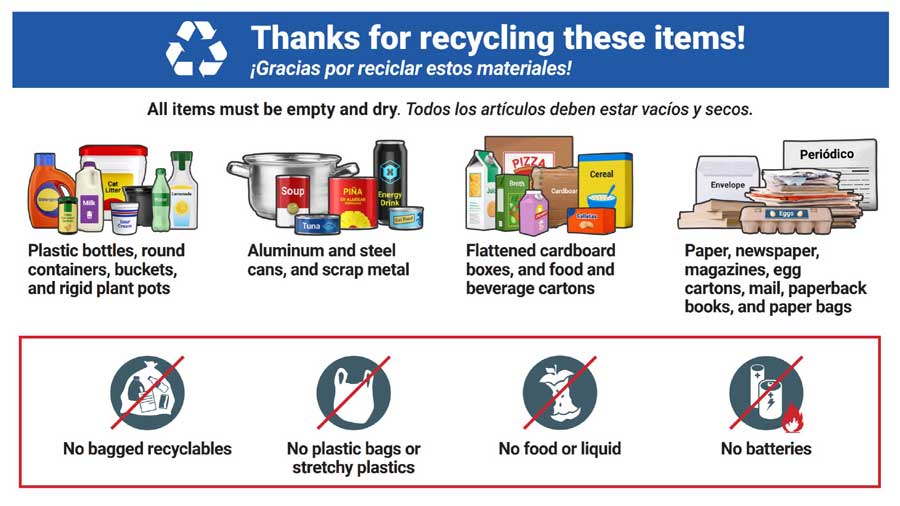GARDEN PLOTS: Gardening success begins with careful planning
Published 7:00 am Wednesday, January 10, 2024

- Rhonda Nowak
“A successful garden is a well-planned and well-thought-out garden … For me, it boils down to understanding and appreciating your climate, space, level of personal commitment, and limitations.“
— Luay Ghafari, “Seed to Table: A Seasonal Guide to Organically Growing, Cooking, and Preserving Food at Home,” 2023
Last week, I introduced readers to Canadian gardening and cooking blogger Luay Ghafari and his gorgeous, comprehensive book “Seed to Table.”
As I mentioned, this book has everything needed to get started or continue on the rewarding pathway to a garden-to-table lifestyle in which fresh garden produce is the mainstay of a healthy, active life. (Who among us doesn’t aspire to that goal in 2024?)
Although I love the fact that Ghafari includes many recipes he’s developed with the bounty from his own garden (such as “Green Beans with Coriander and Garlic” on p. 182 — yum!), make no mistake: This is, first and foremost, a gardening book with lots of practical advice on how to organically grow and harvest cool-weather and warm-weather vegetables and herbs.
Ghafari reminds us that planning a garden consists of deciding which crops we like to eat and cook with, which crops will grow well under the growing conditions of our garden, how much space we have, and how much time and money we want to devote to our garden. For gardeners whose time is limited, Ghafari recommends growing set-it-and forget-it (SIFI) crops, such as lettuce, beets, carrots, potatoes, herbs, kale and bush beans.
I needed to get real about the limitations of my raised bed gardening in Medford.
I’ve been spending July through September in Bandon, where I grow summer crops in a hoop house. This means it’ll be more effective for me to focus on growing spring crops here, along with a few SIFI crops, then making a trip back in August to plant a fall and overwintering garden. Acknowledging and planning for this limitation will reduce my stress and increase my chances of gardening success.
One of the best tools I’ve found to help gardeners create a visual garden plan is Territorial Seed Company’s Garden Planner.
I used this app last year with a seven-day free trial and liked it so much that I paid the $35 fee for a year’s subscription. Along with the planner, I have access to an online journal app, personalized gardening tips based on my plan and lots of gardening videos and articles.
There’s even a live chat feature on the website, or I can send a message to a gardening expert and receive a response within 24 hours.
The Garden Planner app is easy and fun to use, and there’s a start-up video available to walk users through the process.
I started a new plan by clicking on Garden Objects and selecting the Raised Bed (Wood) image to create a structure on a grid that corresponds to the dimensions of two of my raised vegetable beds (I was able to duplicate the first bed by copying and pasting). I also brought in an image of the gravel pathway between the two beds and the trellis arching over the path.
From there, I clicked on “Plants” and typed in the names of all the cool-weather plants I want to grow in my spring garden. There’s also a drop-down menu that lists hundreds of different vegetables, herbs, flowers, fruits and nuts, green manures and perennials. When a particular plant comes up, I can bring the labeled image over to my plan or click on information to learn more about it.
Once I have a plant in my plan, I can drag the image to fill the amount of space I want. I really appreciate the fact that the planner automatically provides the number of plants that will fit into the designated space, and it color-codes each plant according to its family. For example, at a glance I can see that my spring garden has three crops in the Brassica family — kale, radish and arugula.
When the garden plan is finished, I can click on “Plant List” and a listing of all the plants I’ve placed in my raised beds comes up with the quantity of plants I’ll need, spacing information and a color-coded planting calendar that indicates approximate sowing, transplanting and harvesting dates. By placing row cover over my beds, the program automatically shifts the sowing and harvesting dates earlier in the season.
Ghafari discusses the importance of growing companion flowers with vegetable crops, and the Garden Planner has a feature where users can click on a particular plant in their plan, then click “Show Companions,” and a listing comes up of all the flower, vegetable and herb companions for that plant.
I’m finding the Garden Planner and the “Seed to Table” book to be valuable companion resources for planning my garden this year. Next week, I’ll talk about the importance of journaling and how the Garden Planner and my smartphone help me do that effectively.
Until then, happy garden planning!










